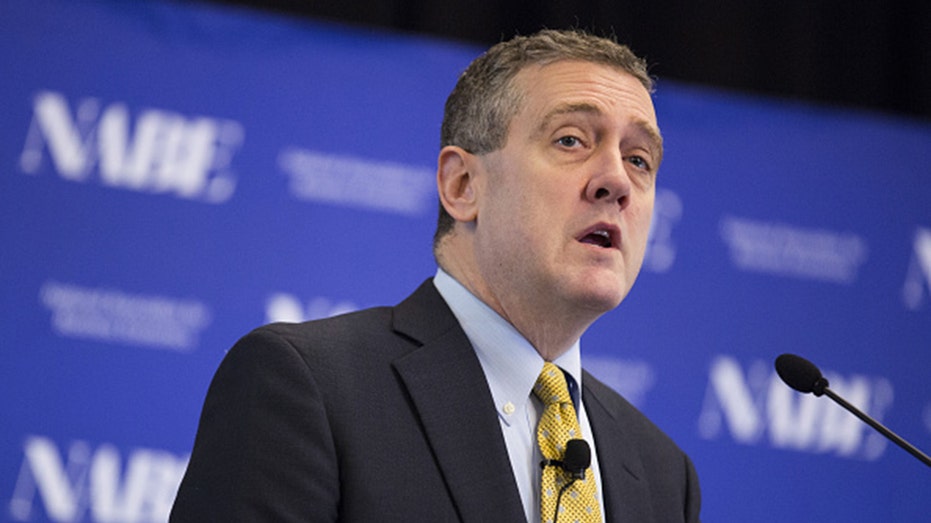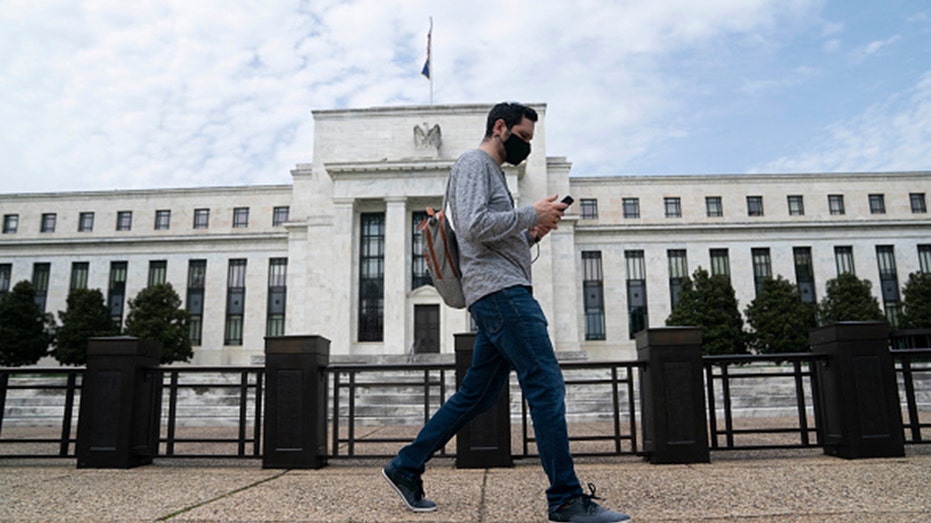Fed's Bullard warns central bank still seems 'behind the curve' on inflation
Bullard believes the Fed needs to more aggressively raise rates
Investors should be 'attentive' to inflation concerns, strained supply chains: Bullard
St. Louis Federal Reserve Bank president James Bullard on the state of the economy and rising inflation concerns.
St. Louis Federal Reserve President James Bullard said Thursday the U.S. central bank remains well behind in its fight to cool the hottest inflation in four decades.
Bullard was the lone dissenter in March, when the Fed voted to hike the benchmark federal funds rate by 25-basis points for the first time since 2018, bringing to an end the ultra-easy monetary policy put in place to prop up the economy throughout the COVID-19 pandemic.
FED RAISES INTEREST RATES FOR FIRST TIME IN 3 YEARS, PROJECTS 6 MORE HIKES AS INFLATION SURGES
He believed the central bank needed to more aggressively raise rates by a half percentage point and begin unwinding its nearly $9 trillion balance sheet – a sentiment that he reiterated on Thursday.

James Bullard, president and chief executive officer at the Federal Reserve Bank of St. Louis, speaks during the National Association of Business Economics' (NABE) Economic Policy Conference in Washington, D.C., U.S. on Monday, Feb. 26, 2018. (Joshua Roberts/Bloomberg via Getty Images / Getty Images)
"I would like the committee to get to 3-3.25% on the policy rate in the second half of this year," Bullard told reporters Thursday after a speech at the University of Missouri. "We have to move forthrightly in order to get the policy rate to the right level to deal with the inflation we have got in front of us."
FED SIGNALS HALF-POINT INTEREST RATE HIKE 'APPROPRIATE' AT FUTURE MEETINGS
However, he acknowledged that bond market adjustments to the Fed's rate increases suggest that rates are not that far off course.
"If you take account of [forward guidance] we don’t look so bad. Not all hope is lost. That is the basic gist of this story," Bullard said.
Minutes from the U.S. central bank's March 15-16 meeting released on Wednesday show that "many" policymakers would have preferred a larger rate increase last month but determined that a more modest quarter-point hike would be appropriate "in light of greater near-term uncertainty associated with Russia’s invasion of Ukraine."

A man wearing a mask walks past the U.S. Federal Reserve building in Washington D.C., the United States, on April 29, 2020. ((Xinhua/Liu Jie via Getty Images) / Getty Images)
Policymakers also proposed shrinking the Fed's nearly $9 trillion balance sheet at a maximum monthly pace of $60 billion in Treasurys and $35 billion in mortgage-backed securities. By comparison, the Fed trimmed its balance sheet at a rate of $50 billion a month from 2017 to 2019.
Officials are expected to approve the balance-sheet reduction – and possibly raise rates by 50-basis points – at their next gathering on May 3-4.
Traders are now pricing in more than a 70% chance of a hefty half-point rate jump when policymakers meet next month, instead of a more modest quarter-point increase, according to the CME's FedWatch tool.
GET FOX BUSINESS ON THE GO BY CLICKING HERE
It would mark the first time since 2000 that the U.S. central bank raised the federal funds rate by 50 basis points.
"The minutes did indicate that a hawkish Fed is clearly ready to lift rates by 50 basis points in one or more meeting going forward as the central bank prepares to shift into a higher gear in its policy normalization process," RSM chief economist Joseph Brusuelas said.





















